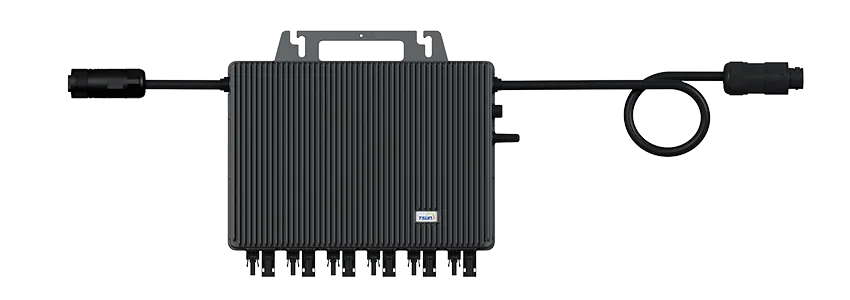Microinverters represent a transformative leap in solar technology, fundamentally altering how solar energy is captured, converted, and utilized. Unlike conventional central or string inverters, which handle the energy conversion process for an entire array of solar panels, microinverters operate on a per-panel basis. This decentralized approach not only optimizes the performance of individual panels, creating a more efficient and resilient solar energy system, but it also enhances the overall effectiveness of solar installations than traditional methods.

At the core of a microinverter's function is its ability to convert direct current (DC) generated by a solar panel into the alternating current (AC) used by home appliances. This conversion is crucial as most household devices are designed to run on AC power. With each solar panel having its dedicated inverter, the DC-to-AC conversion happens efficiently and independently, ensuring that shading, debris, or a malfunction in a single panel doesn't compromise the whole system's output.
The efficiency gained from microinverters lies in their capability to operate each solar panel independently. In traditional systems, the performance of the entire array can be limited by the weakest panel, akin to how a single weak link can compromise a whole chain. Microinverters, however, allow each panel to perform to its fullest potential regardless of its neighbors' conditions. This individualized attention to panels maximizes energy harvest even in cloudy conditions, partial shade, or when some panels are oriented differently.

Reliability and durability play crucial roles in assessing the trustworthiness of solar technology investments. Microinverters are designed with robust components capable of withstanding the harsh conditions to which solar installations are often exposed. Many manufacturers provide warranties that span 20 to 25 years, demonstrating confidence in their products’ longevity. This assurance is significant for homeowners and businesses seeking to capitalize on solar energy while minimizing future maintenance concerns.
how microinverters work
The expertise embedded within microinverters extends to their incorporated technologies such as Maximum Power Point Tracking (MPPT). MPPT is vital for optimizing the power output by continuously adjusting the electrical operating point of the modules. With microinverters, each panel benefits from its MPPT controller, unlike central inverters where only one MPPT controller serves the entire array. This distinction not only maximizes performance but also further aligns with the tailored operational model that microinverters provide.
Installation, another critical aspect where expertise is paramount, becomes streamlined and safer with microinverters. These systems reduce complex electrical work as high-voltage DC wiring is minimized. Instead, AC wiring akin to standard household wiring routes the electricity, making microinverters an attractive option for residential settings and urban installations where safety is a priority. This straightforward setup not only alleviates installation woes but also reduces potential electrical hazards, underscoring their user-friendly reputation.
The authoritative status that microinverters have gained in the solar industry is accentuated by their adoption among industry leaders and sustainability advocates. Recognized for fostering innovation in solar energy capture and distribution, renowned energy companies trust microinverters for various scales of projects. Their endorsements, grounded in technical assessments and performance metrics, solidify the microinverter’s position in modern solar solutions.
In conclusion, the way microinverters work embodies significant advancements in solar technology through enhanced efficiency, reliability, and flexibility. They address both the intricate performance demands of individual solar panels and the broader energy needs of diverse environments. By offering a uniquely decentralized and intelligent approach to energy conversion, microinverters deliver on the promise of maximizing renewable energy potential while instilling confidence in users with their long-term performance promises. Their contribution positions them as a pivotal player in the transition towards smarter, more effective solar energy systems.
 LEARN DETAILS
LEARN DETAILS
 News
News



